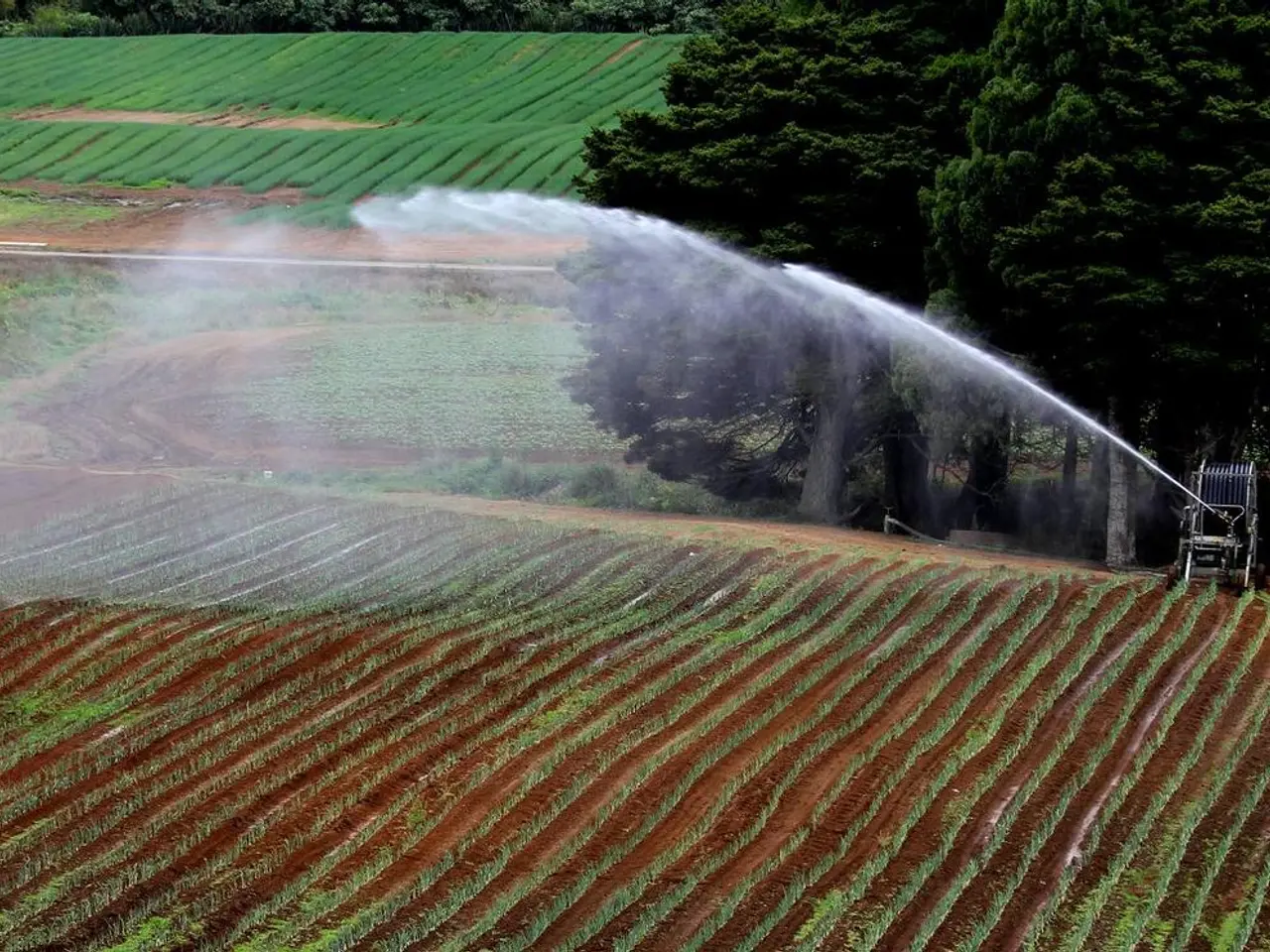Guide on Crafting Local Climate Zones Using Permaculture Methods
Permaculture design focuses on creating productive, resilient, and self-sustaining ecosystems by working with natural processes. A key aspect of this approach is the manipulation of microclimates—small-scale variations in environmental conditions that can significantly impact plant growth and ecosystem health. This article explores documented case studies and methods demonstrating the successful implementation of microclimate creation in permaculture systems.
Ridgedale Permaculture Farm in Sweden serves as a detailed example of microclimate creation through thoughtful site design and plant succession. Situated on 10 hectares with diverse terrain, the farm leverages a Keyline layout to optimise water distribution and retention, creating favourable conditions for both annual and perennial crops. Tree and shrub planting, succession management, and cover cropping are some strategies employed to create microclimates that support a wide range of plants.
Cover crops are a versatile tool in permaculture for creating beneficial microclimates. Plants like pigeon peas, perennial peanut, and scarlet runner beans can act as windbreaks, reduce soil temperature, and maintain soil moisture, especially in warm, drought-prone regions. No-till methods with cover crops can also cut organic matter loss by half compared to conventional tillage, leading to cooler, more moisture-retentive soils.
Food forests, a hallmark of permaculture design, deliberately layer plants to mimic natural forest ecosystems and create diverse microclimates. By establishing canopy, sub-canopy, understory, and ground cover species, food forests create zones of varying light, humidity, and temperature, allowing for a wide range of crops to thrive in close proximity. Techniques like swales and rain gardens are integrated to slow, spread, and sink water, preventing runoff and creating moist microclimates even during droughts.
While not strictly permaculture, the Miyawaki Method of micro-forestry is relevant as it demonstrates rapid creation of dense, native tree cover that dramatically alters local microclimates. Heavily amending and mounding soil improves water retention and creates raised, well-aerated planting beds, enhancing root growth and plant vigour. Planting three to five woody species per square meter, representing all forest layers, quickly establishes a closed canopy that moderates temperature, humidity, and wind at ground level.
Agroforestry practices, which integrate trees with crops or pasture, are recognised as effective for restoring marginal lands by creating sheltered, fertile microclimates that support both ecological and agricultural functions. Such systems enhance carbon sequestration, biodiversity, and water cycling at the landscape scale.
In summary, successful permaculture projects create microclimates by designing for water, plant diversity, and soil health. Ridgedale Permaculture Farm exemplifies site-wide hydrological design and plant succession, while cover cropping and food forests demonstrate plant-based microclimate engineering at smaller scales. The Miyawaki Method, though developed outside permaculture, underscores the speed and efficacy of dense, native planting for microclimate creation. Together, these approaches show that intentional design can transform even challenging sites into productive, resilient ecosystems.
- Ridgedale Permaculture Farm, located in Sweden, showcases the creation of microclimates through strategic site design and plant succession, utilizing a Keyline layout for optimal water distribution and retention.
- Microclimate creation at Ridgedale Farm is facilitated by strategies such as tree and shrub planting, succession management, and cover cropping, which support a wide range of plants.
- Cover crops, like pigeon peas, perennial peanut, and scarlet runner beans, are a versatile tool in permaculture for creating beneficial microclimates, acting as windbreaks, reducing soil temperature, and maintaining soil moisture.
- No-till methods with cover crops can lead to cooler, more moisture-retentive soils, as organic matter loss is cut in half compared to conventional tillage.
- Food forests, characteristic of permaculture design, layer plants to mimic natural forest ecosystems and create diverse microclimates, allowing for a wide range of crops to thrive in close proximity.
- Techniques like swales and rain gardens are integrated in food forests to slow, spread, and sink water, preventing runoff and creating moist microclimates even during droughts.
- The Miyawaki Method of micro-forestry, though not strictly permaculture, demonstrates rapid creation of dense, native tree cover that significantly alters local microclimates.
- Heavily amending and mounding soil in the Miyawaki Method improves water retention, creating raised, well-aerated planting beds that enhance root growth and plant vigour.
- Planting three to five woody species per square meter, representing all forest layers, quickly establishes a closed canopy in the Miyawaki Method, moderating temperature, humidity, and wind at ground level.
- Agroforestry practices, which integrate trees with crops or pasture, are recognised for restoring marginal lands by creating sheltered, fertile microclimates that support both ecological and agricultural functions.
- These agroforestry systems enhance carbon sequestration, biodiversity, and water cycling at the landscape scale.
- In conclusion, successful permaculture projects focus on designing for water, plant diversity, and soil health, transforming challenging sites into productive, resilient ecosystems and contributing to the fields of environmental-science, climate-change mitigation, renewable-energy, nutritional health, home-and-garden, sustainable-living, and the broader gardening industry.




